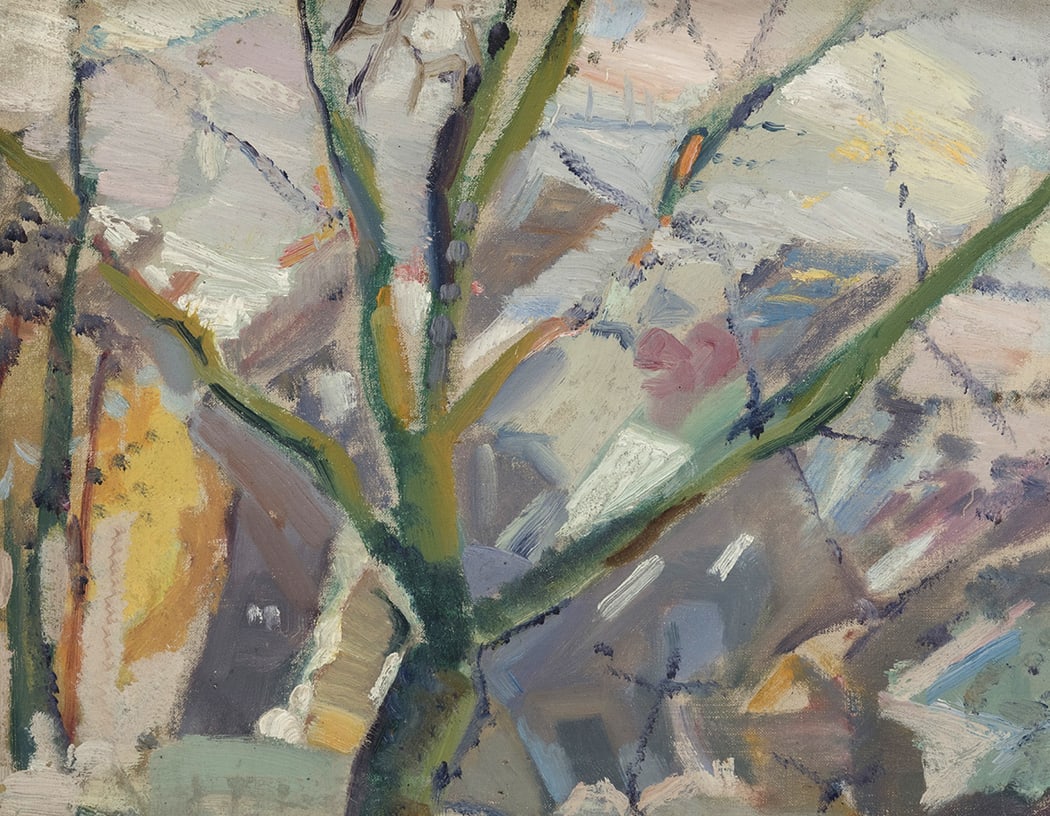
While working in the town to the west of the Hudson River, Marin produced a sequence of oils, his abstracting tendencies at a fever pitch. Scholarship has debated the dating of all the works from the Weehawken Sequence: their formal and chromatic sophistication is startling given their early date. The academic community has nonetheless reached consensus that all of the works from this series were executed very early in Marin’s career, between roughly 1910 and 1916. Their full mastery of post-impressionist color and their prescient application of painterly gesture help place them as some of the earliest examples of advanced abstraction in America. Marin would have been first to point out that each work was drawn from life and maintains a tether to the practice of observation, but the daring with which they are executed pushes them far beyond Marin’s contemporaries. In his lifetime, he held the admiration of Willem de Kooning and Jackson Pollock. These works have been called “proto-Guston” and Marin “possibly the first American artist to make abstract paintings.” Marin would have been exposed to the Fauves during his 1905 trip to Paris, and while we do not have a record of a particular thread of influence, the stamp of André Derain and Matisse is all over Marin’s early oils in the following decade. The palette shared by the French Post-Impressionists is on full display, as is Matisse’s innovative use of incising into thick impasto with the back of the brush. The Weehawken Sequence is painted with brilliant abandon, yet recognizable imagery remains visible. Indeed, Marin painted outdoors exclusively—the small size of the canvas-panels of the series is a vestige of the plein air practice. Marin would keep to restrained scale even into the 1950s, in part working under the shadow of the great success of these early works. His vocabulary of gestures would change over the years, refining a group of riffs and forms into a signature style. But in the early years of the 1910s, Marin tried anything and everything. These germinal laboratories are not only some of the most advance paintings made in America before World War I, they also circumscribe the territory of modernism within which Marin would spend the rest of his life on expedition. Marin himself claimed that some of the Weehawken pictures were done as early as 1903—a confusion that Fairfield Porter absorbed, as in the quote above—but it is much more likely that they were painted between 1910 and 1916.
On view at the Park Avenue Armory during the ADAA Art Show through March 1, and at 22 E80th Street through April 24th, 2020. The gallery is open to the public 9:30 to 5:30, Monday through Friday, and by appointment, at 22 East 80th Street, New York, NY, 10075. Visit www.msfineart.com or email info@msfineart.com, or call (212) 879-8815 for more information.

